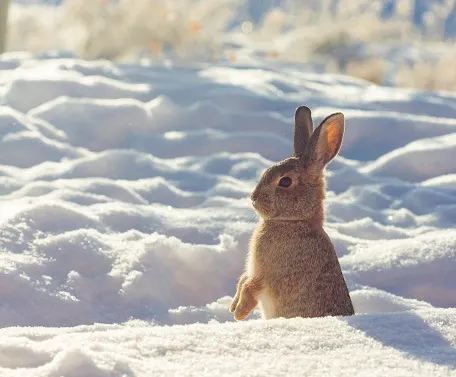
The wild ways in which some P.E.I. animals survive winter
While there hasn't been much snow in the province so far this winter, Prince Edward Island did recently experience some record-low temperatures.
Some animals hibernate or leave P.E.I. for warmer locations as winter approaches, but many others tough it out.
They're able to do that by making some adaptations.
Kate MacQuarrie is the director of forests, fish and wildlife with P.E.I.'s Environment Department.
SEE ALSO: Four fascinating ways animals survive the winter
She's a professional biologist and naturalist who shares her knowledge about eating wild foods and tracking wild animals on social media, as well as giving workshops and talks.
We asked her to pick a few of the more interesting animals that spend winters on P.E.I., no matter how cold it gets.

Kate MacQuarrie is a biologist and an accomplished outdoorsperson. (Kate MacQuarrie)
Snowshoe hares
MacQuarrie said snowshoe hares are often the first animals people think about when it comes to winter wildlife adaptations on P.E.I.
They turn white in the winter and have large hind feet that act like snowshoes.
When it comes to what they eat — things get a little gross.
"Snowshoe hares are not strict vegetarians, so when it gets really cold, they actually will scavenge on dead wildlife, including dead snowshoe hare," she said.
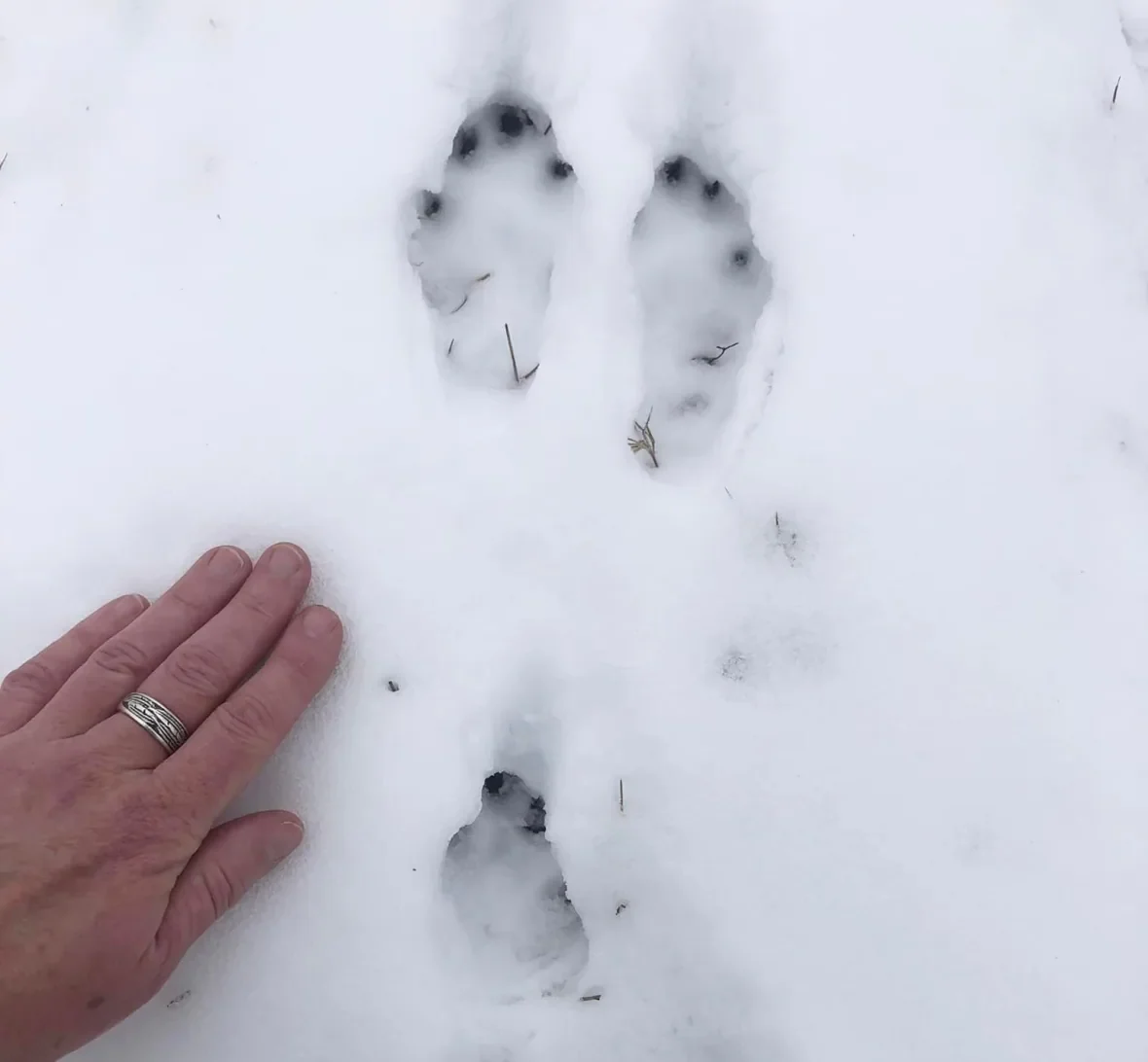
Snowshoe hares have big back feet that allow them to jump through deep snow more easily. (Kate MacQuarrie)
"And they'll reingest their own feces. So if you think of an animal eating bark and buds and things like that — not a lot of energy, hard to digest. So they excrete it out. It gets coated with bacteria that help break it down. Then they reingest it to go through a second digestion process."
Snowshoe hares are active all winter long, but spend cold, windy days sheltering under dense spruce trees.
That also helps them stay out of sight of predators.
If you're looking closely, you might see their tracks, MacQuarrie said. They look like they're doing leapfrog, with two large hind feet landing in front of two offset front feet.
"It's a very distinctive track. Sometimes they splay their toes; they spread them out. If the snow is soft, the tracks can look huge — it looks like a monster," she said.
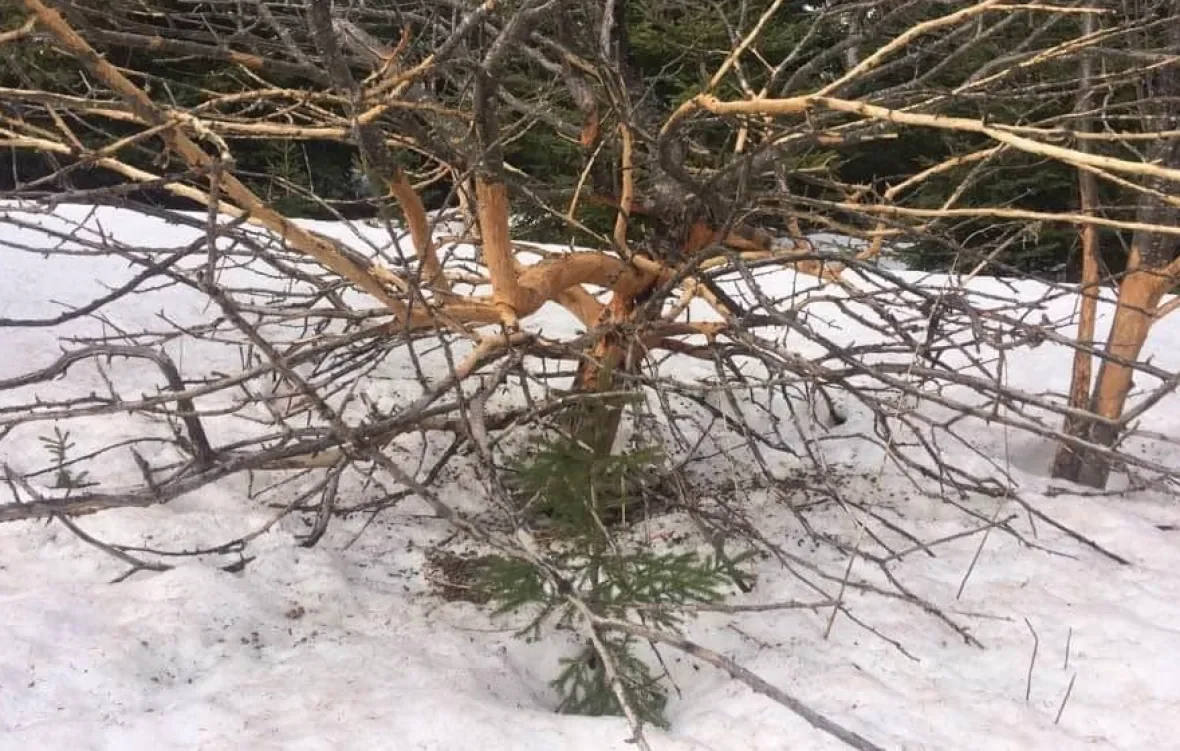
You can see the snowshoe hare scat under a tree where the animals have been sheltering in cold, windy weather. (Kate MacQuarrie)
Ruffed grouse
MacQuarrie said a lot people on P.E.I. refer to ruffed grouse as partridge.
Grouse have adaptations that allow them to walk through snow more easily by creating their own "snowshoes."
"There's little finger-like projections on the sides of their feet. It's called pectination and really it just increases the surface area of the foot to make it easier for them to walk in snow. It also helps them to get traction in icy conditions," MacQuarrie said.
But they are only for the winter. When spring rolls around, they fall off.
MacQuarrie said ruffed grouse may be having a harder time finding a comfy place to sleep this winter. Grouse like lots of fluffy snow, into which they dive to keep warm and safe while they sleep.
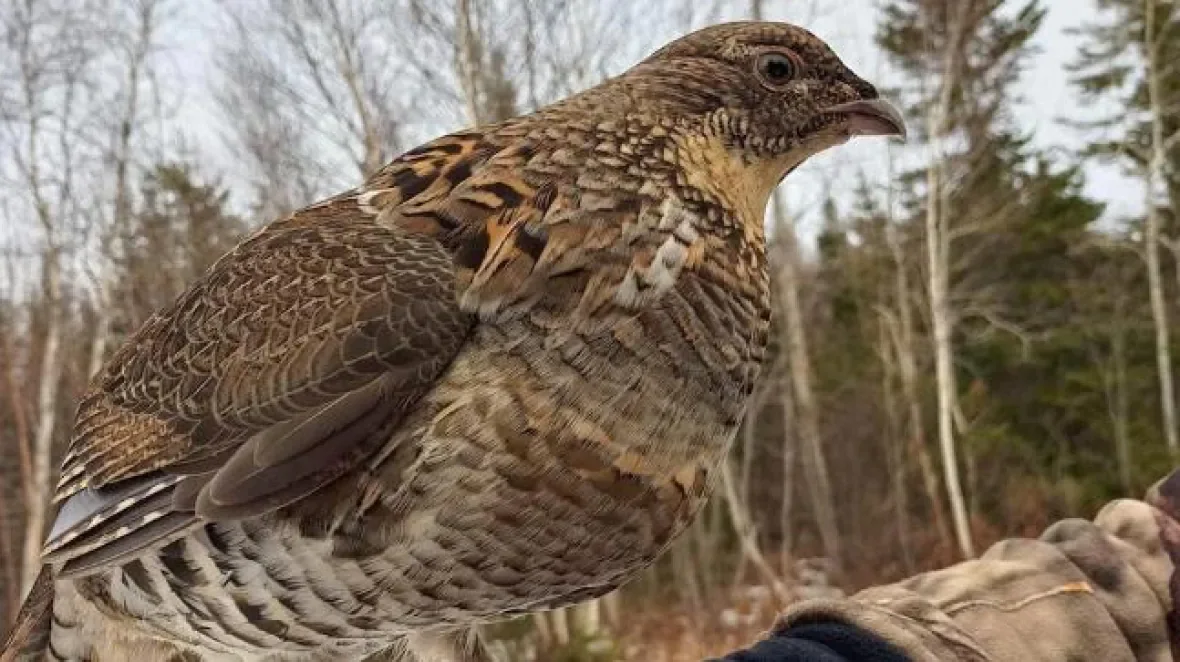
Ruffed grouse usually like to dive into deep fluffy snow to keep warm, but there hasn't been much snow around this winter. (Submitted by André LeBouthillier)
"So this year will be a little bit challenging for them," she said.
"While we don't want to say very much good about [post-tropical storm] Fiona, some of those fallen spruce trees are giving really great shelter for things like ruffed grouse this year ... You can see where they roost because they leave behind piles of scat."
The birds feed mostly on buds during the winter. And once again, Fiona has had a benefit.
"Some of those trees that have fallen over — so things like poplars that are now down — have put more buds in the reach of our ruffed grouse. So it's giving them a little extra protection and a little extra food this year."
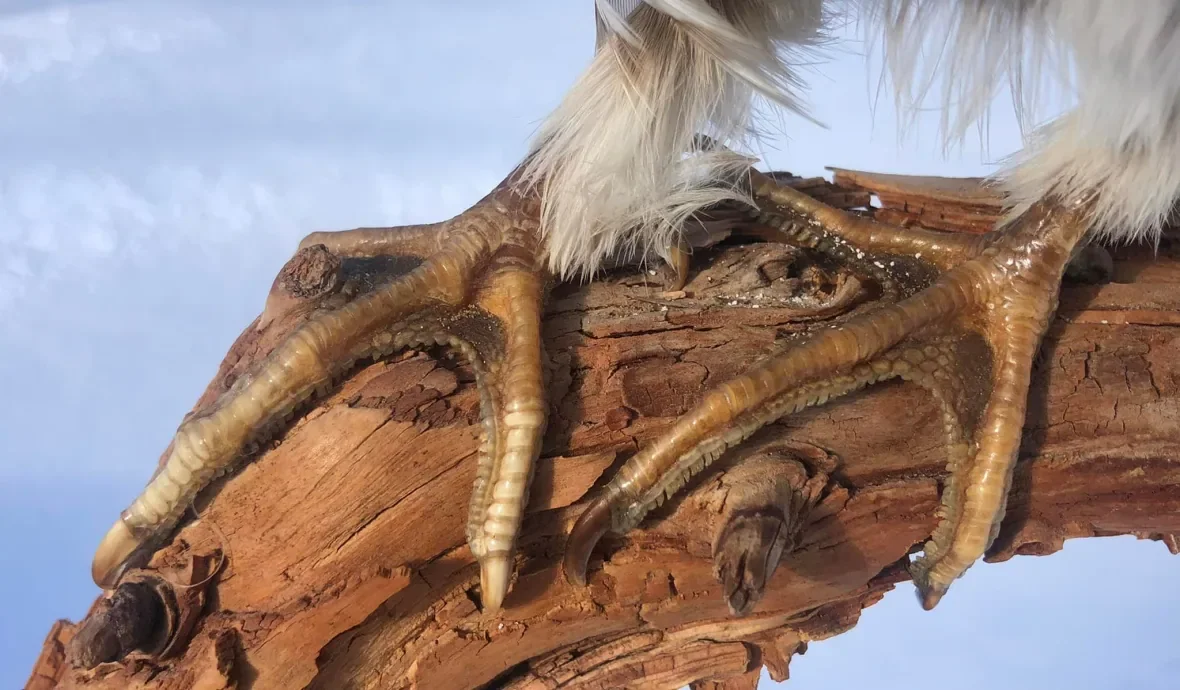
Ruffed grouse have tiny projections that grow out of their feet in the fall, which act like snowshoes in the winter. (Kate MacQuarrie)
Deer mice
MacQuarrie loves these "beautiful little guys."
"They're active all winter long, but they go into what's called torpor, so it's not an actual hibernation. But during the day they just slow down their metabolism so they're not using as much energy. And they're more active at night, just to avoid predators who could see them in the daylight," she said.
Deer mice keep warm by huddling together in nests that can sometimes be found in warm dark places like boots or in the backs of couches.
"They build nests out of nice warm material ... if they don't have access to fibre or wool or hair or things like that, they'll use grass and leaves to build a nice toasty nest, and a group of them will huddle together. So you've got that body heat from a bunch of animals instead of each animal on its own," MacQuarrie said.
She said the mice don't want to expend too much energy in the winter, so they build little caches or collections of seeds to feed on all winter.
One remarkable adaptation of deer mice is how they internally adapt to really cold temperatures.
MacQuarrie said they actually increase their red blood cell production.
"Red blood cells help you move oxygen throughout your body and help with that metabolic process. So that gives them a little extra energy, and that extra energy allows them to shiver. And of course, shivering generates heat, just enough heat to keep them as warm as they need to, so that they can live through those coldest temperatures."
Spring peepers
Spring peepers are also known as chorus frogs, because of the sounds or chirping they make in the spring.
MacQuarrie said spring peepers can actually freeze during the winter, because they create their own antifreeze that keeps them alive.
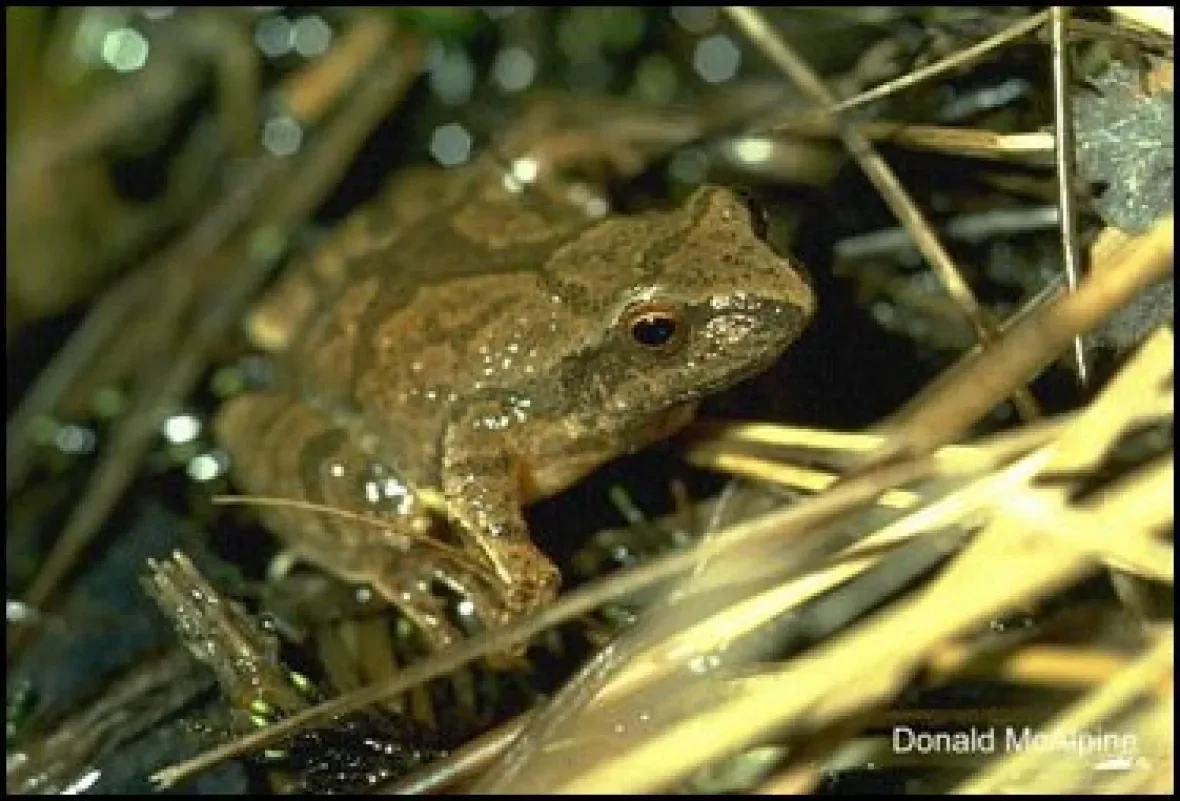
Spring peepers make their own antifreeze from sugar. When the sugar is depleted, it's time to wake up and sing. (Submitted by NatureWatch)
"The thing about ice is that it's sharp, and if it freezes inside a cell, it'll rip that cell apart and kill it. So spring peepers push as much water out of their cells as they can ... and they concentrate sugar inside the cells," said MacQuarrie.
"That increased sugar acts like an antifreeze inside the cells. And if the animal does freeze, the ice forms outside the cell, where it won't cause any damage."
The spring peepers don't go below the frost line, MacQuarrie said. They dig into the mud on the edges of ponds or in leaf litter. When their sugar is depleted in the spring, they wake up.
"As outside temperatures get warm, that wakes them up and they dig out and start singing really nice and early," she said.
WATCH: Halifax given 'bird sanctuary' status, but what does that mean?
Thumbnail courtesy of Getty Images.
The story, written by Maggie Brown, was originally published for CBC News.










